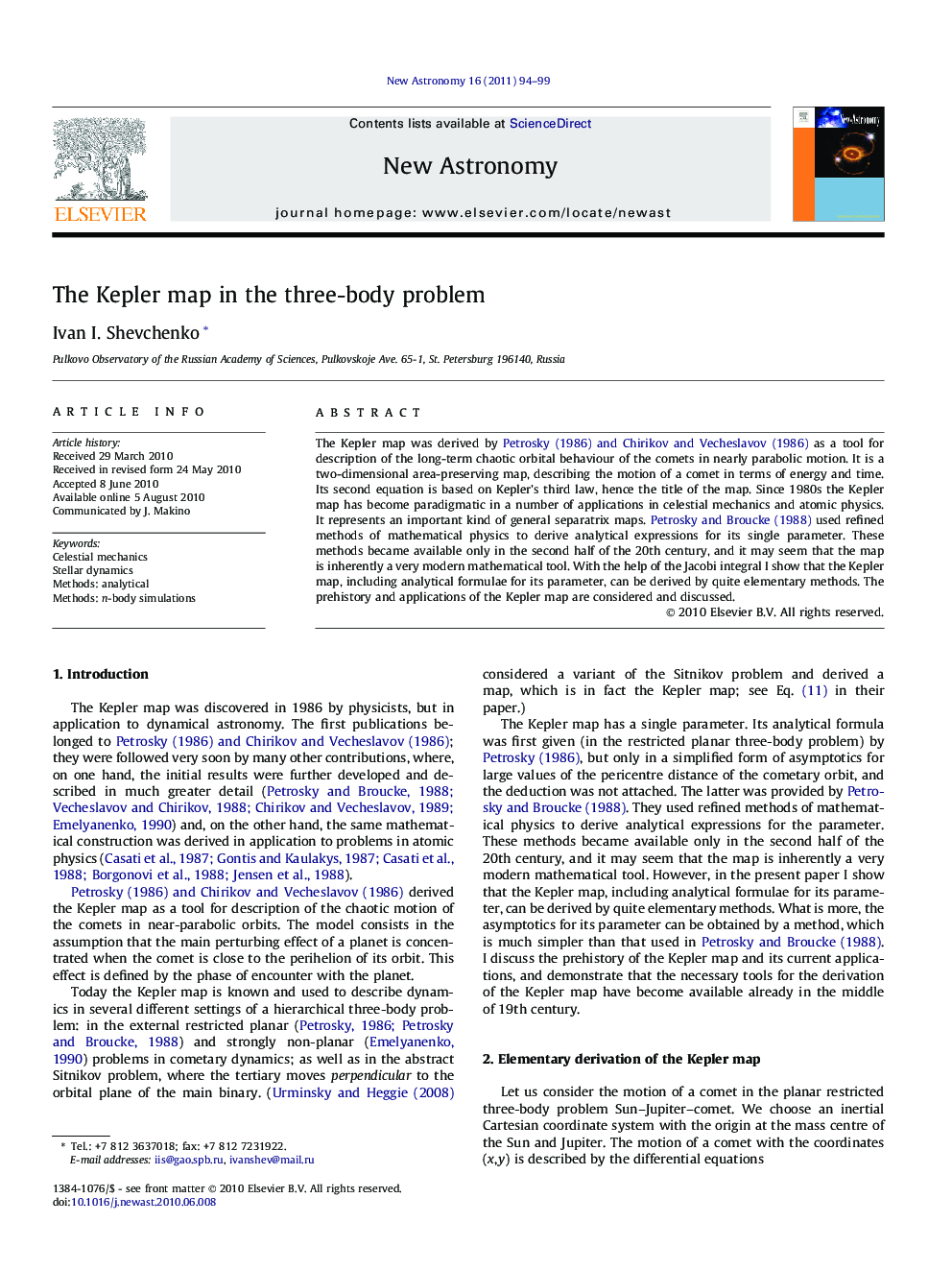| Article ID | Journal | Published Year | Pages | File Type |
|---|---|---|---|---|
| 1779428 | New Astronomy | 2011 | 6 Pages |
The Kepler map was derived by Petrosky, 1986 and Chirikov and Vecheslavov, 1986 as a tool for description of the long-term chaotic orbital behaviour of the comets in nearly parabolic motion. It is a two-dimensional area-preserving map, describing the motion of a comet in terms of energy and time. Its second equation is based on Kepler’s third law, hence the title of the map. Since 1980s the Kepler map has become paradigmatic in a number of applications in celestial mechanics and atomic physics. It represents an important kind of general separatrix maps. Petrosky and Broucke (1988) used refined methods of mathematical physics to derive analytical expressions for its single parameter. These methods became available only in the second half of the 20th century, and it may seem that the map is inherently a very modern mathematical tool. With the help of the Jacobi integral I show that the Kepler map, including analytical formulae for its parameter, can be derived by quite elementary methods. The prehistory and applications of the Kepler map are considered and discussed.
